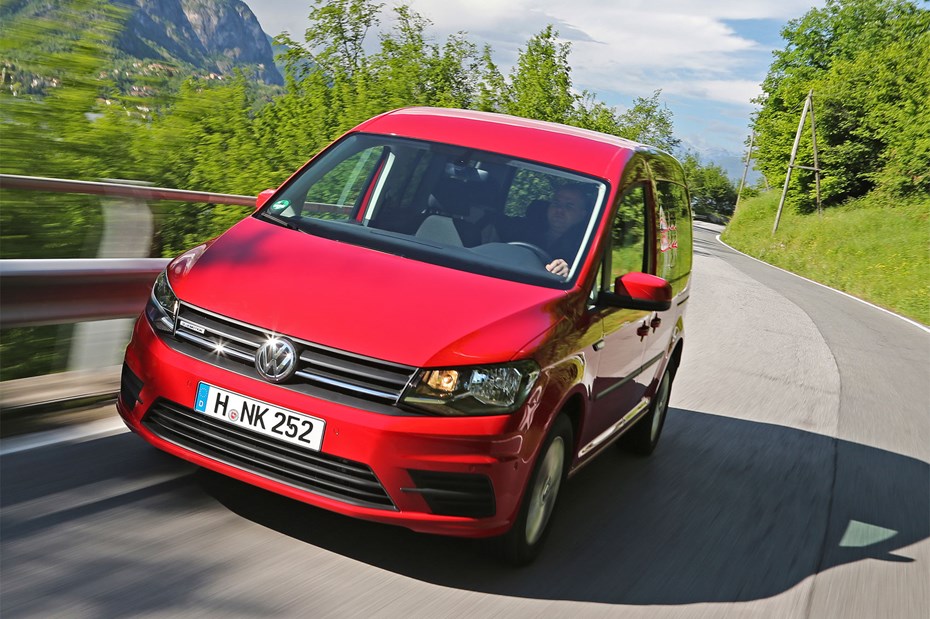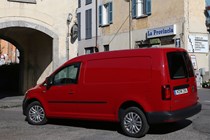You’ve familiar with TDI – the three initials Volkswagen uses to denote a turbodiesel vehicle. You may also be aware of TSI, which denotes VW’s turbo petrol engines. But the badge on the back of the Caddy tested here reads TGI.
Eh?
What on earth does TGI mean?
The G basically stands for gas – which is to say compressed natural gas, or CNG.
A highly pressurised version of the stuff that runs your central heating (and not the same as LPG – liquid petroleum gas – found on some filling station forecourts), CNG is an alternative fuel that has the potential to be exceedingly eco-friendly, but one that has also always struggled to deliver real-world performance.
Now (in the wake of dieselgate…) VW is taking a real crack at improving CNG car and van technology with a new engine based on the well-established 1.4-litre TSI turbo petrol. We’ve driven it in a Caddy, but a similar 1.0-litre TGI motor will also be offered in the sixth-generation Polo as well.
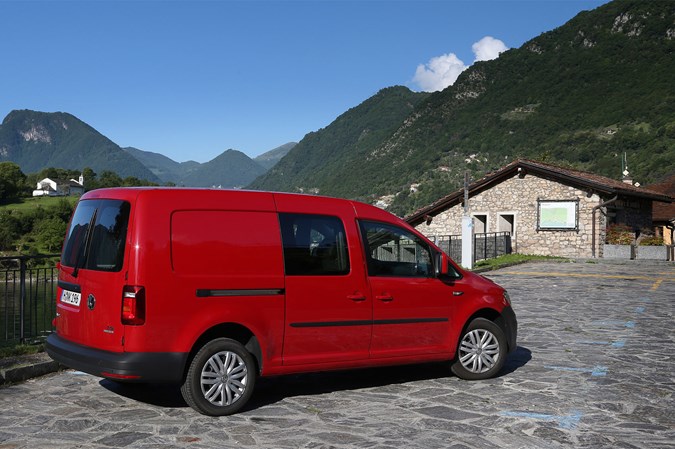
With the promise of much-improved performance and range, not to mention excellent refinement, CO2 as low as 112g/km and almost no NOx emissions, this wonder-fuel sounds so great that we just had to try it.
The catch is, with only eight refuelling locations in the UK at the time of writing (we use the word ‘locations’ advisedly; more in a moment) and no plans to offer the technology in right-hand drive, this review may sadly be the closest you get to driving a Caddy TGI of your own.
Nonetheless, the tech is definitely worthy of closer investigation – so keep reading…
What’s so great about CNG as a fuel?
It’s viewed as a potential stepping stone between conventional fuels (petrol and diesel) and more radical alternatives such as full electric vehicles.
The dreamy scenario is that in TGI guise it promises the low CO2 and long-distance range of a diesel van, but with the refinement and air quality advantages of petrol – while generally costing less than either of them.
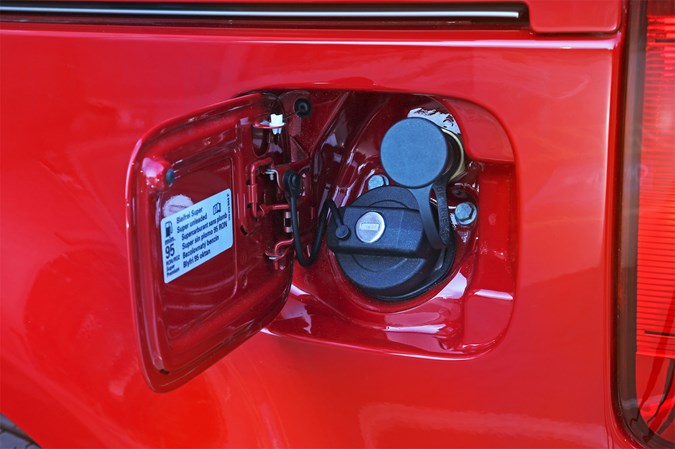
Better yet, if the CNG in the tanks is sourced from biomethane rather than straight-up natural gas – which is a non-renewable fossil fuel like petrol and diesel – the whole cycle or ‘well to wheel’ CO2 rating drops to around 60% of even diesel, making it very green indeed.
That’s according to the UK’s Low Carbon Vehicle Partnership (LowCVP) incidentally, not Volkswagen.
>> The Parkers Vans guide to electric vans
What’s biomethane got to do with CNG?
Biomethane – also known as renewable methane or e-gas – can be created in a variety of ways, but usually comes from waste products. The Caddys driven here, for example, were filled at a fuel station in Germany that gets its CNG from biomethane harvested from straw bales.
No, really. The exact process is a closely guarded secret, but we can tell you it involves microbes. Quite. Apparently you can do the same thing with seaweed (using different microbes).
CNG vehicles can switch between regular natural gas and biomethane without issue, since the stuff is essentially the same when you get to the basic chemistry. This is an advantage compared to, say, bioethanol which can be mixed into petrol but risks engine damage over time at higher concentrations.
How does CNG compare to electricity as an alternative fuel?
Well, emissions in motion are higher with CNG, obviously – as electric vehicles (EVs) don’t produce any when driving.
However, the electricity that’s used to charge them still has to come from somewhere, and this has an environmental impact. EVs are also made from expensive components that require exotic materials, whereas the Caddy TGI essentially runs on a modified petrol engine.
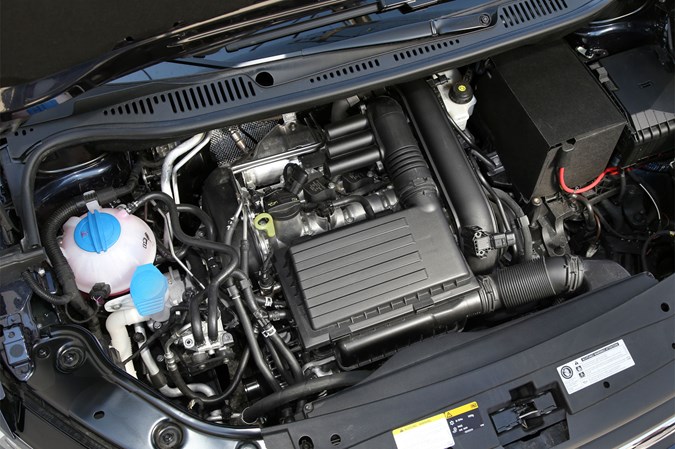
Both face infrastructure challenges – which basically comes down to the lack of filling stations and charging points.
Both should also be able to take advantage of existing networks to solve this, however. Just as electricity comes from the grid, natural gas can be delivered to filling stations via the same pipes that power your boiler.
The gas is compressed on site – to 200 bar; way, way higher than the pressure of your central heating – which partially explains why even a small CNG station currently costs around £250,000.
Not cheap, but CNG’s scalability is theoretically better. For Germany to meet the electricity demands of one million EVs all plugging in at once, for example, it would apparently need 35 extra power stations. Thirty-five.
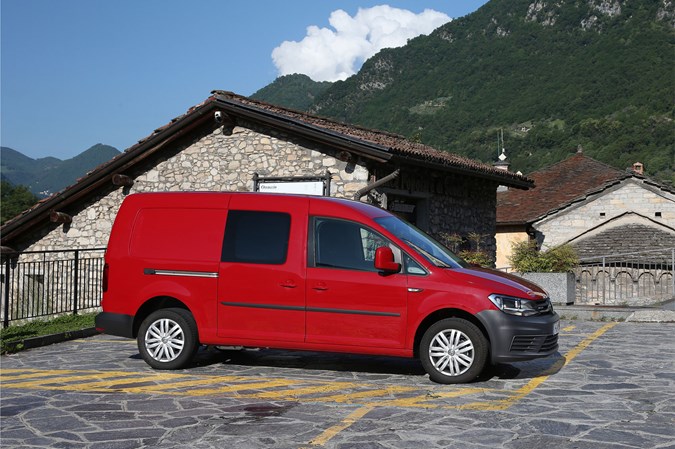
And finally, not only will a CNG van go far further between fill ups than an electric model – the Caddy claims a 390-mile range (530 miles if it’s a long-wheelbase Caddy Maxi), while the longest-lasting electric small van, the 2017 Renault Kangoo ZE 33, is officially rated to just 170 miles – it takes only a few minutes to top up the tanks.
And although this process isn’t quite as fast as chugging in a load of diesel, it’s still far more convenient than an electric van. Which will need to be stationary for at least an hour to get any meaningful boost – and even then you’re talking tens of miles, rather than hundreds.
What are the disadvantages to CNG-powered vans?
Aside from the fact you can’t fuel them anywhere the Caddy TGI does require a few compromises.
Gladly, load volume isn’t among them. The gas is stored in special pressure-tested tanks, and while these take up more room than a conventional fuel tank, they still fit beneath the floor, making no difference to amount you can get in the back.
Trouble is that this extra gear does weigh more, and this results in a payload reduction of 100-150kg. That’s a big hit, especially given the Caddy is already behind the best choices for payload in the small van sector.
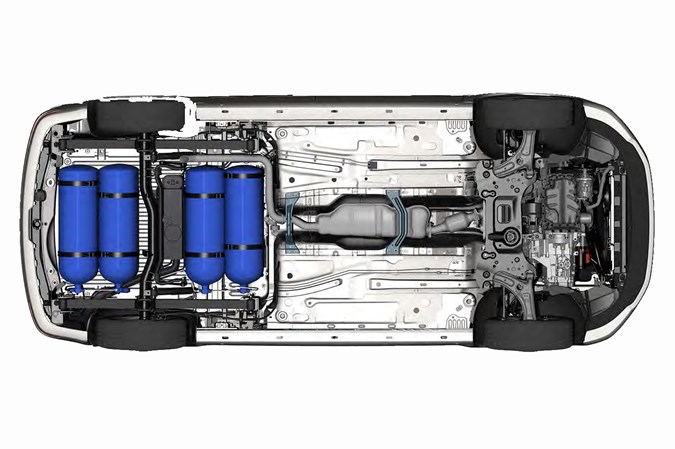
Those tanks aren’t fit and forget, either – they not only need regular inspection but entirely replacing on a schedule determined by safety levels. In Italy, where CNG has been popular as a low-budget fuel for years – this is every four years.
Tank remanufacturing helps keep prices down, but it is still a running cost factor; going forward the van will prevent you from driving on expired tanks, in much the same way that you can’t drive a Euro 6 diesel if you’ve run out of AdBlue.
CNG vehicles have also traditionally been more expensive than conventional equivalents, but in this instance VW is promising price parity with diesel, in order to deliver on the advantages from the first mile.
What’s the Caddy TGI like to drive?
If no-one told you and you didn’t clock the TGI badge, you probably wouldn’t notice the difference.
Actually, that’s not strictly true – if you drive a diesel Caddy, you will certainly notice the engine noise, or rather the absence of it. To the point where you’ll probably start picking up increased wind and road roar instead.
It’s not that this is worse in the TGI; rather that there’s no competing diesel drone to drown it out. We’re not entirely convinced by VW’s assertion that the TGI is quieter than an equivalent petrol Caddy – the motor has a slightly harsher sound, too – but it is certainly very refined.
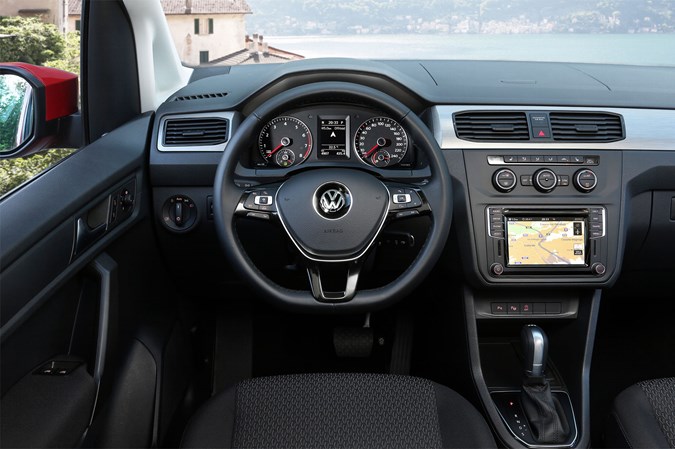
The rest of the driving experience is very familiar, with the latest Caddy’s composed by arguably over-firm ride present and correct, together with the same light but accurate steering. The engine produces 110hp and 200Nm, so performance is brisk but not mind-blowing.
You can even get the TGI with a DSG automatic transmission in place of the standard six-speed manual. Both gearboxes drive the front wheels, and work painlessly well. Though a little more incisiveness wouldn’t go amiss, and the DSG did have a tendency to hang on to gears a very long time when accelerating from a standstill.
Any changes inside?
Only to the instrumentation, where you’ll find a second fuel gauge nestling among the dials and some additional trip computer information.
Why two fuel gauges? Because the Caddy TGI is what’s known as a ‘quasi-monovalent’ CNG vehicle, meaning it has a small 13-litre petrol tank in addition to the gas canisters.
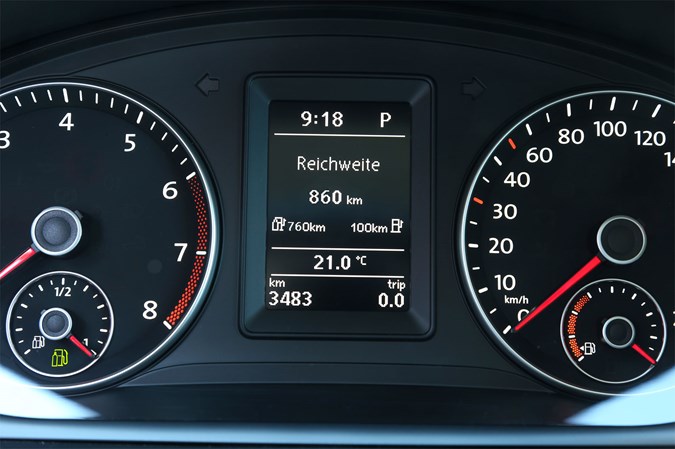
The petrol helps it start when temperatures drop below -10-deg C, and also functions as an emergency reserve should you find yourself too far from a CNG station.
I want one – can I buy a Caddy TGI in the UK?
As an individual, probably not. And even if you’re a fleet there’s no way VW is going to produce any in right-hand drive.
If this still hasn’t put you off, and you’re either close to an existing CNG ‘bunker’ or have the space to put in one of your own, VW will almost certainly listen to enquiries if you’re prepared to order a large-ish number of vehicles.
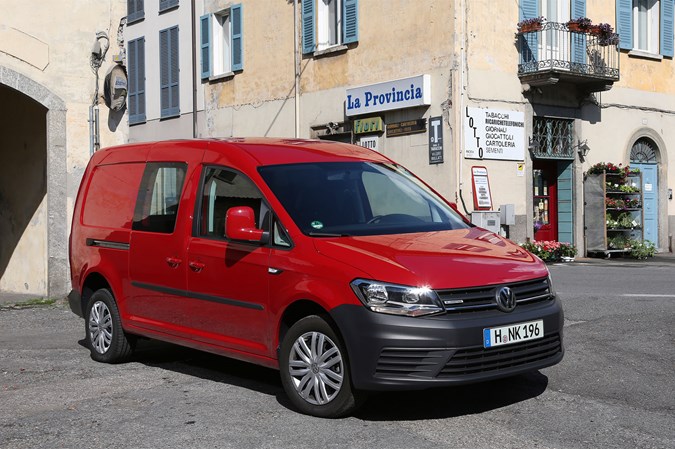
There are some existing CNG fleets in the UK – most of the refuelling locations referred to above belong to private companies such as Tesco, and exist in order to keep their vehicles running. Smaller CNG customers are often allowed access to these refuelling facilities by arrangement.
Verdict
The VW Caddy TGI is a convincing piece of future-gazing technology. It runs just like a regular van, is easily and quickly refuelled given the right infrastructure, and provides adequate performance.
It’s a shame about the impact on payload, but if VW was really worried about this the Caddy could be homologated at a higher gross vehicle weight to compensate, so this isn’t a long-term issue in the small van sector.
Put a fuelling network in place and people would buy them. But sadly we’re a unlikely to see that happen any time soon in the UK.
Also read:
>> VW Caddy full review on Parkers Vans
>> VW Caddy Black Edition UK road test review
>> The Parkers Vans guide to electric vans
Just so you know, we may receive a commission or other compensation from the links on this website - read why you should trust us.


